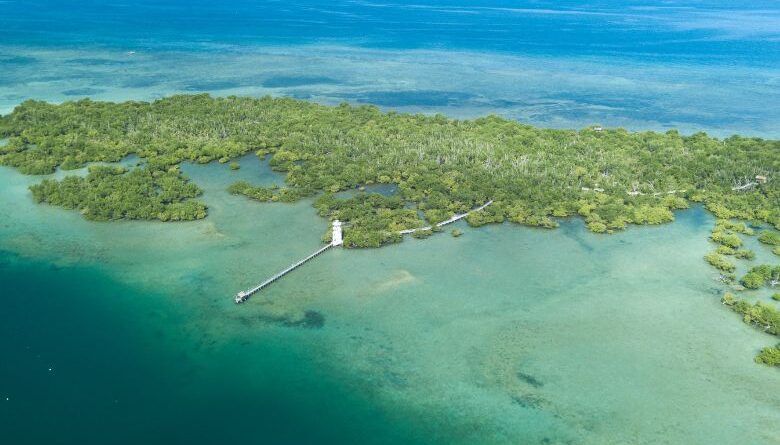The Role of Technology in Ocean Conservation
The Role of Technology in Ocean Conservation
1. Introduction
The world’s oceans play a vital role in supporting life on Earth, providing essential resources, regulating the climate, and serving as a home to a diverse range of marine species. However, human activities have taken a toll on the health of our oceans, leading to a pressing need for conservation efforts. In recent years, technology has emerged as a powerful ally in the fight to preserve and protect our marine ecosystems. This article explores the role of technology in ocean conservation and how it is transforming the way we approach marine preservation.
2. Understanding Ocean Conservation
Ocean conservation is the systematic and sustainable management of marine resources to ensure the long-term health and resilience of ocean ecosystems. It involves various strategies aimed at reducing human-induced impacts on the oceans and promoting their recovery.
3. The Importance of Ocean Conservation
Ocean conservation is of paramount importance for several reasons. Firstly, oceans are a major source of oxygen production through marine plant photosynthesis. They also play a crucial role in carbon sequestration, absorbing a significant portion of carbon dioxide from the atmosphere. Additionally, oceans support millions of livelihoods through fishing, tourism, and coastal activities.
4. Challenges in Ocean Conservation
Efforts to conserve the oceans face numerous challenges. Some of the key challenges include:
– Overfishing and Illegal Fishing
Overfishing disrupts marine ecosystems, depletes fish populations, and threatens the survival of marine species. Illegal, unreported, and unregulated fishing further exacerbates this issue.
– Pollution and Plastic Waste
Pollution from land-based sources and plastic waste poses significant threats to marine life. Plastic debris not only harms marine creatures but also enters the food chain, affecting human health.
– Ocean Acidification
Ocean acidification, a result of increased carbon dioxide absorption by the oceans, harms marine organisms like corals and shellfish, which rely on calcium carbonate to build their shells and skeletons.
– Coral Bleaching
Rising sea temperatures due to climate change cause coral bleaching, a phenomenon that results in the loss of colorful algae from corals, leading to their death.
5. How Technology is Advancing Ocean Conservation
Fortunately, technological innovations are revolutionizing ocean conservation efforts. Some notable advancements include:
– Marine Drones and Robotics
Marine drones and underwater robotics allow scientists to explore remote ocean areas, collect data, and monitor marine life without disturbing their habitats.
– Satellite Monitoring
Satellite technology enables real-time monitoring of ocean conditions, such as sea surface temperature, which aids in identifying areas susceptible to coral bleaching and other threats.
– Artificial Intelligence in Ocean Research
AI is being employed to analyze vast amounts of ocean data, helping scientists make data-driven decisions and predict environmental changes.
– IoT Applications for Marine Protection
The Internet of Things (IoT) is utilized to track marine species’ movements, detect illegal fishing activities, and monitor environmental parameters.
6. Sustainable Fishing Practices
Sustainable fishing practices are crucial for maintaining fish populations and preserving marine biodiversity. Some examples include:
– Smart Fishing Gear
Innovative fishing gear equipped with sensors and GPS technology can reduce bycatch and prevent overfishing.
– Tracking and Monitoring Systems
Fisheries can implement tracking and monitoring systems to ensure compliance with fishing regulations and prevent illegal fishing.
7. Mitigating Pollution and Plastic Waste
Efforts to combat pollution and plastic waste in the oceans are aided by technology:
– Ocean Cleanup Technologies
Various projects employ specialized technologies to remove plastic waste from the oceans, preventing further harm to marine life.
– Monitoring and Analysis Tools
Advanced monitoring and analysis tools help identify pollution sources and devise effective mitigation strategies.
8. Combating Ocean Acidification
Addressing ocean acidification involves innovative approaches:
– Carbon Capture and Storage
Research is ongoing to develop techniques for capturing and storing carbon dioxide, reducing its impact on marine environments.
– Algae and Seagrass Restoration
Planting algae and seagrass can help absorb excess carbon dioxide and restore critical habitats.
9. Protecting Coral Reefs
Coral reefs, among the most biodiverse ecosystems, are at risk. Technology aids in their protection:
– Coral Restoration Techniques
Advanced techniques, including coral nurseries and transplantation, support the recovery of damaged reefs.
– 3D Printing for Reef Structures
3D printing technology is utilized to create artificial reef structures that mimic natural habitats for marine life.
10. Citizen Science and Public Engagement
Engaging the public in ocean conservation is crucial. Technology facilitates this through:
– Ocean Conservation Apps
Mobile apps offer educational resources, data collection tools, and opportunities for public participation.
– Volunteer Monitoring Programs
Citizen science initiatives involve the public in collecting data and contributing to scientific research.
11. International Collaborations in Ocean Conservation
Global cooperation is essential for effective ocean conservation:
– Global Data Sharing
Countries and organizations share ocean data to gain a comprehensive understanding of global marine conditions.
– Joint Research Expeditions
International collaborations foster knowledge exchange and joint efforts in ocean research and conservation.
12. Challenges and Limitations of Technology in Ocean Conservation
While technology presents numerous benefits, it also faces certain challenges and limitations:
– Cost and Accessibility
Advanced technologies may be expensive and not readily available for all regions and stakeholders.
– Technical Limitations
Some marine environments are challenging to access, limiting the application of certain technologies.
– Ethical Considerations
Technology usage in ocean conservation requires ethical considerations to avoid unintended consequences.
13. Future Prospects and Innovations
The future of ocean conservation holds exciting possibilities:
– Autonomous Underwater Vehicles
Self-operating underwater vehicles promise improved data collection and expanded exploration capabilities.
– Ocean Energy Generation
Innovative approaches to harness ocean energy can reduce reliance on fossil fuels.
– Bioinspired Solutions
Drawing inspiration from marine organisms can lead to sustainable engineering solutions.
14. Conclusion
Technology is a game-changer in the realm of ocean conservation. From marine drones to AI and IoT applications, innovations are transforming the way we understand and protect marine ecosystems. Embracing sustainable fishing practices, combating pollution, and restoring coral reefs are essential steps toward preserving the oceans for future generations.
15. FAQs
- Q: How can marine drones contribute to ocean conservation?
- Marine drones enable non-invasive data collection and monitoring of marine life, helping researchers study ecosystems without disturbance.
- Q: What role does AI play in ocean research?
- AI processes large datasets, identifying patterns and trends to support informed decision-making in ocean conservation efforts.
- Q: How can individuals contribute to ocean conservation?
- Citizens can participate in clean-up initiatives, adopt sustainable practices, and support organizations working towards ocean protection.
- Q: Why are coral reefs vital to the marine ecosystem?
- Coral reefs provide essential habitats for marine species, support fisheries, and protect coastlines from erosion.
- Q: How does ocean acidification impact marine organisms?
- Ocean acidification hinders the ability of certain marine organisms to build and maintain their shells and skeletons, threatening their survival.
- AI-Powered Personal Assistants: Enhancing Productivity
- Blockchain Voting: Ensuring Trust in Democratic Processes





Pingback: AR in Architecture and Design: Visualization and Collaboration | UTHSI 2023